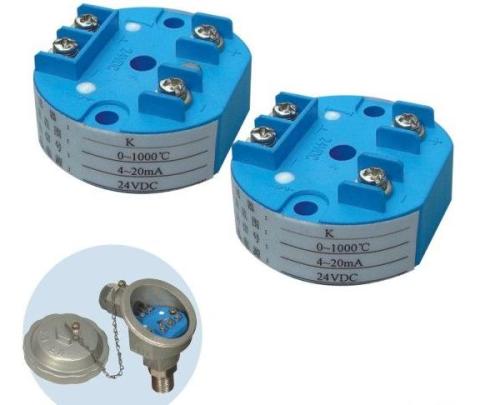
The basic principle of the temperature transmitter that Xiao Bian provides for everyone today, we can do some reference according to above content, hope to help the user to learn some application knowledge about the transmitter appropriately. It helps the user to avoid minor problems during use and cannot solve the period when the instrument's best handling failure is missed.
With the continuous development of power electronics, microelectronics and large-scale integrated circuits, transmitters are increasingly used in industry. Then the user how to choose the better performance of the transmitter to the industrial control, the following small series for everyone to introduce the basic principles of the temperature transmitter.
The temperature transmitter consists of a measuring unit and an amplifying unit. The range consists of a circuit board consisting of an input circuit and a feedback circuit. The range unit varies according to the input signal. There are three range units that match the DC millivolt, thermocouple, and thermal resistance input types. The amplification unit is common to all three inputs.
The DC millivolt signal can be provided by any sensor or sensitive element. The DC millivolt range unit is relatively simple. Before the DC millivolt signal is amplified by a factor of 5, there is an answer circuit such that when the input signal Ui=0, the output signal Uo=1v ( The standard signal protocol stipulates), in order to meet this requirement, also design a feedback circuit, make the output voltage Uo and feedback voltage Uf have certain relation: Uo =5Uf. The zero adjustment potentiometer W1 and the feedback potentiometer Wf need to be adjusted repeatedly to achieve the accuracy requirement.
The thermoelectric range unit must have cold junction compensation and linearization. The cold junction compensation bridge method is basically the same as described above. The linearization function is due to the non-linear relationship between the change of the thermoelectric potential and the temperature. A negative feedback circuit is designed to make it have a polyline characteristic. The slope of each segment of the polyline is different, but the approximation can be regarded as a curve, so that the closed loop amplification is related to the input thermopower. The size of the curve changes, which essentially cancels the nonlinearity of the thermocouple, and the output voltage makes it substantially proportional to the temperature.
Thermal resistance range unit adopts two-wire system to introduce thermal resistance. For platinum resistance, the resistance-temperature curve is a monotonically convex curve. As the retention temperature increases, the resistance increment decreases. A positive feedback circuit is designed to increase the output signal as the input resistance increases. Significant, that is, the output electrical resistance curve is a concave curve, so as to achieve the linearization function. The copper resistor itself has a good linearity and does not require a linear ratio.
The amplifying unit uses the basic circuit of an integrated operational amplifier plus a power amplifier.
The above temperature transmitter measures DC millivolts, range is 3-100mv, zero migration amount is -50-50mv; matching range is 3-60mV with thermocouple; and range is -100-500°C when matched with platinum thermal resistance. The accuracy level is 0.5.
I believe everyone is not unfamiliar with Ebike Motors. According to the different position characteristics they are used on bicycles, there are no more than three common types. One is the Central EbikeMotor commonly used on mountain assisted bicycles. Given the characteristics of mountain Electric Bikes, riders need to quickly receive the assistance of an electric motor during their uphill and downhill journey in a very short amount of time. The central electric motor precisely fits this characteristic. As long as the foot is stepped on it, the motor will enter a working state, providing necessary strength support for riders, making outdoor mountain cycling particularly enjoyable and free. Another type is the rear wheel hub motor and the front wheel hub motor, which are commonly used on urban series power assisted bicycles. Because the most common time for people to ride in the city is during commuting to and from work, commuting to and from school, and ending a tiring day of work. Riding a favorite power assisted E Bike not only saves effort but also avoids the troubles caused by road traffic congestion. Lithium battery assisted bicycle operation with rear wheel hub Motor.
Rear Hub Motor,Front Hub Motor,Hub Motor
Ejoysport Technology (SuZhou)Co.,LTD , https://www.ejoysportbike.com